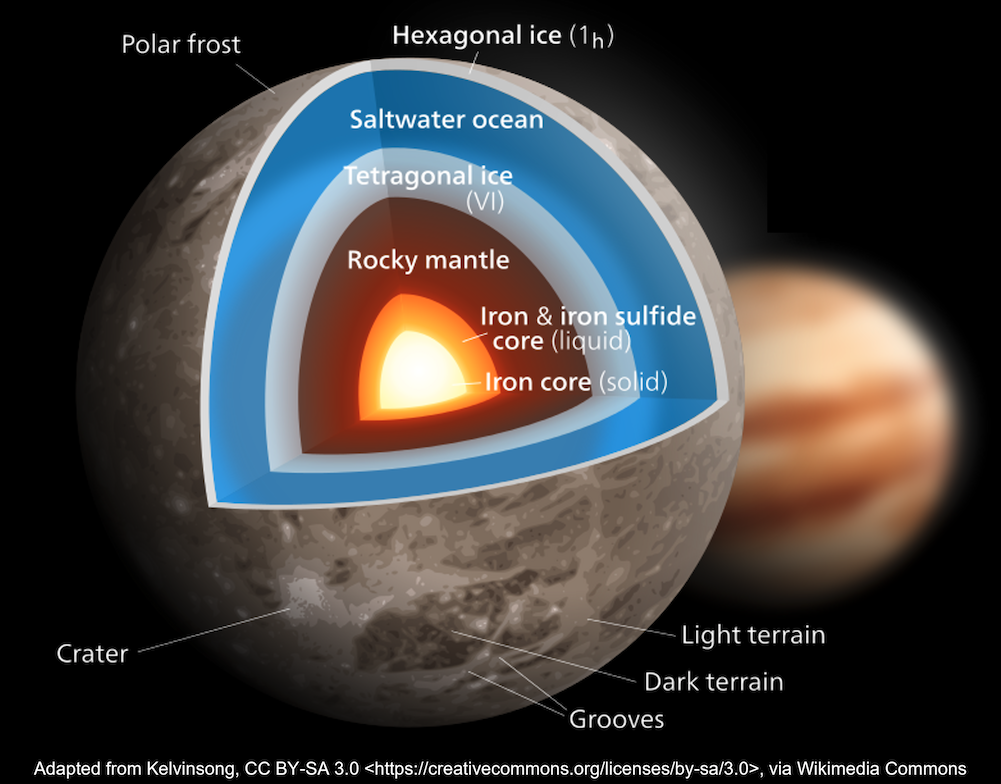
Hypervelocity impacts are a fundamental process affecting all solar system bodies throughout their history.
These impact processes generate extreme temperatures and pressures sufficient to induce chemical reactions within fractions of a second, while the resulting impact craters reveal underlying materials that can be used to date surfaces when studied remotely from orbit. A combination of dedicated experimental and computational simulations are therefore required to provide an in depth understanding of impact induced chemistry and cratering on planetary surfaces.
Extensive previous research has studied the cratering process on rocky and icy surfaces comprising a single component (e.g. a specific mineral composition), however, this simplified scenario does not represent the diverse range of environments that are found amongst the planetary bodies in our solar system. For example, several moons of the outer solar system gas giants are thought to exhibit layered structures comprising an icy crust over liquid ocean, whilst Titan has evidence of liquid hydrocarbon lakes and oceans overlying solid ice. Within the inner solar system, Mars has extensive polar ice caps comprising CO2 and water ice overlying mixtures of ice and dust. The primary goal of this project is to study impacts into layered surfaces, particularly those comprising a mixture of solid and liquid phases.
The project will make use of the University of Kent light gas gun facility to measure the influence of such interfaces on the induced chemistry by utilising multiple analytical techniques post-impact (e.g. GC-MS, FTIR and Raman spectroscopy), the effect it can have on crater morphology (especially if a layer is transient) and how these change with impact parameters such a layer thickness, impactor size and velocity. The experimental work will be supported and validated using nonlinear dynamic modelling.
For more details and discussion of the project contact Drs Penny Wozniakiewicz and Jon Tandy.